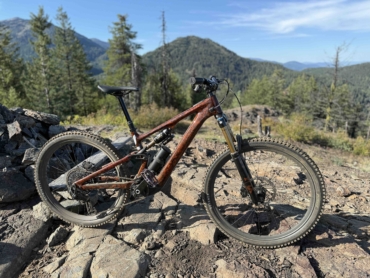The new policy treats e-bikes like traditional bikes and aims to provide greater access, reduce environmental impact, and ‘expand the option of bicycling to more people.’
“E-bikes are allowed where traditional bicycles are allowed.” In a policy memo released today, the National Park Service (NPS) succinctly formalizes an increasingly popular stance across many U.S. states governing the use of e-bikes on public lands.
Following an order by Interior Secretary David Bernhardt this week, the NPS today announced rules governing e-bikes in national parks. And the new regulations effectively recognize e-bikes as non-motorized bicycles. Class 1, 2, and 3 e-bikes will have access to park roads, paved or hardened trails, designated off-road motor vehicle areas, and administrative roads.
“As more Americans are using e-bikes to enjoy the great outdoors, national parks should be responsive to visitors’ interest in using this new technology wherever it is safe and appropriate to do so,” NPS Deputy Director P. Daniel Smith said in a press release.
“They make bicycle travel easier and more efficient, and they provide an option for people who want to ride a bicycle but might not otherwise do so because of physical fitness, age, disability, or convenience, especially at high altitudes or in hilly or strenuous terrain.”
E-Bikes in National Parks: You Can Use Them
Although the NPS’s new rules grant more access for e-bikes in national parks, there are some restrictions.
First off, e-bikes will not have access where traditional bicycles are prohibited, like wilderness areas. And park superintendents “retain the right to limit, restrict, or impose conditions of bicycle use and e-bike use in order to ensure visitor safety and resource protection.”
Second, while these rules apply to all classes of e-bikes — including class 2 bikes, which can run without pedaling — riders can only use the power provided by the motor to assist pedaling. But how they will enforce this remains unclear.
Even though the cycling world continues to clash with the e-bike phenomenon, more Americans continue to adopt the new technology. Just last summer, the Forest Service allowed e-bikes on its land for first time. The move opened the door to greater access on public lands.
In reaching its decision today, the NPS said that, if used properly, e-bikes will reduce greenhouse gas emissions and reduce traffic congestion in parks and free up vehicle parking spaces. And, perhaps most importantly, they will increase cycling’s visibility, making it safer to bike in national parks.
For more information on the use of traditional or e-bikes, visit the NPS website and find the specific park you’re visiting.







